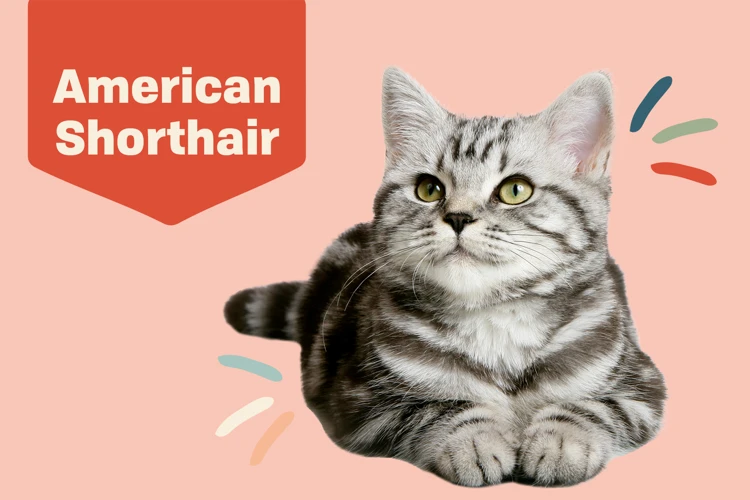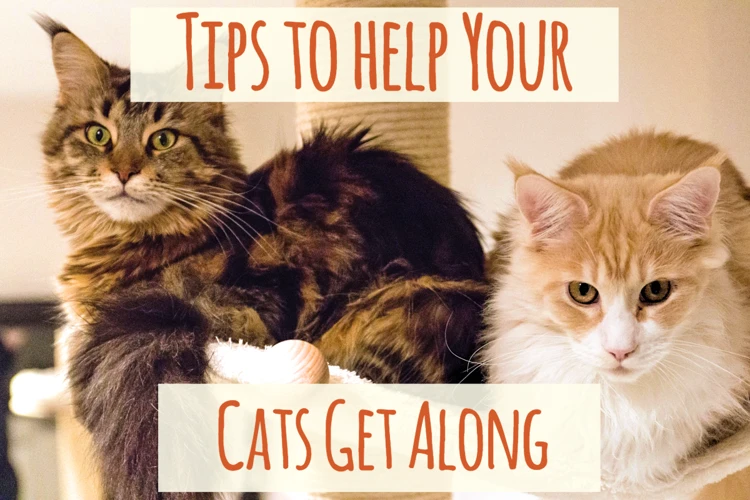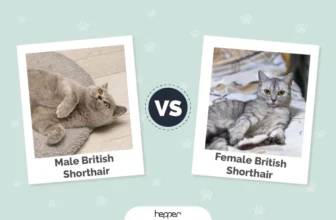As a pet owner, few things are more distressing than watching your furry family members turn on each other. While it’s true that cats can be known for their aloof personalities, American Shorthairs, in particular, have a reputation for being quite territorial and prone to aggressive outbursts. Coping with aggression and conflicts between pets is a topic pet owners often grapple with. As a devoted owner of an American Shorthair and other pets, I was determined to find ways to keep the peace and keep my cats safe from harm. After extensive research and trial and error, I have developed a step-by-step guide that will help you manage conflicts between your American Shorthair and other pets. If you too are struggling to deal with aggression and conflict in your household, read on for practical tips and strategies that can bring peace to your home.
Understanding Aggression in American Shorthairs

Understanding the reason behind a pet’s aggression can be a perplexing experience, especially when dealing with American Shorthairs, who have a reputation for having a short temper. It’s crucial for pet owners to recognize the signs and causes of aggression in their American Shorthairs in order to manage and prevent future conflicts with other pets. Whether you’re introducing your Shorthair to a new dog, teaching them how to get along with other cats, or helping them overcome their fear of animals, this section will provide you with helpful tips on understanding your American Shorthair’s aggression.
Causes of Aggression in American Shorthairs
Aggression in American Shorthairs can be caused by a variety of factors. Understanding these causes can help to prevent conflicts and maintain a peaceful home environment for your pets. Here are some common causes of aggression in American Shorthairs:
| Pain or Illness | If your American Shorthair is in pain or feeling unwell, they may become aggressive. Cats may become defensive if they feel vulnerable or like they are unable to protect themselves. |
| Fear or Anxiety | American Shorthairs may become aggressive if they are afraid or feeling anxious. Fearful cats may lash out in an attempt to protect themselves or their territory. |
| Protecting Territory | American Shorthairs are territorial animals and may become aggressive in an attempt to protect their territory. This can cause conflicts with other pets in the household. |
| Unfamiliarity with Other Pets | If your American Shorthair is not familiar with other pets in the household, they may become aggressive when trying to establish their dominance. It is important to introduce your pets slowly and carefully to prevent conflicts. |
| Lack of Socialization | Early socialization is crucial for American Shorthairs. If they do not have positive experiences with other pets during their early development stages, they may become aggressive towards other animals later in life. |
It’s important to keep in mind that American Shorthairs are unique individuals, and their behavior depends on their personality and experiences. If you are struggling with aggression in your American Shorthair, seeking help from a professional may be necessary. Additionally, providing your American Shorthair with a safe space during playtime, as outlined in this article, can also help prevent conflicts.
Recognizing Signs of Aggression in American Shorthairs
Recognizing signs of aggression in American Shorthairs is critical to managing conflicts between your pets. It’s important to be able to identify when your American Shorthair may be exhibiting aggressive behavior towards your other pets, so that you can intervene and prevent any potential harm. Here are some physical and behavioral signs to look out for:
| Physical Signs | Behavioral Signs |
|---|---|
| Arched back: Your American Shorthair may arch its back and fluff up its fur when feeling threatened or territorial. | Growling or hissing: These sounds are clear indicators of aggressive behavior. Listen for these noises when introducing your pets to each other or during playtime. |
| Dilated pupils: If your pet’s pupils are enlarged, it could be a sign of fear or aggression. | Stalking or chasing: If your American Shorthair is following your other pets around the house or actively chasing them, this is a clear sign of aggression. |
| Flattened ears: When your American Shorthair is feeling threatened or aggressive, it may flatten its ears against its head. | Biting or scratching: If your American Shorthair is biting or scratching your other pets, even playfully, this is a sign of aggression that shouldn’t be encouraged. |
If you notice any of these behaviors, it’s essential to take action. Don’t assume that your American Shorthair is just playing around, as this could escalate into a serious conflict. It’s important to understand the root cause of these behaviors to effectively manage them. You can learn more about preventing and managing conflicts between your pets by reading our other articles, such as Early Socialization for American Shorthair Kittens or How to Teach Your American Shorthair to Get Along with Your Cats.
Preventing Conflicts Between Your Pets

As a responsible pet owner, it’s important to take steps to prevent conflicts between your pets. This is especially crucial when introducing your American Shorthair to other pets in your household. By following some simple tips and techniques, you can ensure that your pets coexist peacefully and happily. Let’s dive into some effective ways to prevent conflicts between your furry friends. But first, if you haven’t yet introduced your American Shorthair to a dog, learn how to do it in our article Introducing Your American Shorthair to a New Dog: Tips and Techniques.
Introduce Your Pets Slowly and Carefully
When introducing a new pet to your American Shorthair, it’s important to do so slowly and carefully to avoid any potential conflicts. This process can take some time, so be patient and don’t rush the intros. Here are some steps to help make the introduction process smoother:
| Step | Description |
|---|---|
| Step 1: | Start by keeping your pets separated, but in visual contact with each other. This can be done by using a baby gate or a separate room with a glass door. |
| Step 2: | Allow your pets to sniff each other’s belongings, such as beds, blankets, and toys, to become familiar with one another’s scent. |
| Step 3: | Once your pets seem comfortable with each other’s scent, you can try introducing them in a controlled environment, such as a room with no furniture or hazards. |
| Step 4: | Keep the initial meetings short and always supervise the interaction. If either pet seems anxious or aggressive, separate them and try again later. |
| Step 5: | Gradually increase the duration and frequency of the meetings, always keeping a close eye on the pets’ behavior. |
Remember, every pet is different, and the introduction process may take longer for some than others. Be sure to give your pets plenty of time to adjust to each other, and always prioritize their safety. If your American Shorthair is particularly fearful or anxious around other animals, you may want to consider seeking professional help to ease the introduction process. You can find more information about how to help your American Shorthair feel comfortable around other animals here, and tips on creating a safe space for your American Shorthair during playtime here.
Establish Boundaries
Establishing boundaries between your American Shorthair and other pets is crucial in preventing conflicts and managing aggression. Here are some tips on how to set boundaries:
- Designate separate areas: It is important to set up designated living spaces for each pet to avoid territorial disputes. Make sure each pet has their own separate bed, food, and water bowls, litter box, and toys.
- Supervise interactions: Always monitor your pets during interactions, especially during the initial introduction phase. Make sure interactions are short and positive, and never force them to be in the same space if they’re not comfortable.
- Establish feeding routines: Avoid feeding your pets together and establish separate feeding routines for each one. This will help prevent conflicts over food and resources.
- Provide physical boundaries: Use physical barriers such as baby gates or doors to separate pets when necessary. This will give each animal a sense of personal space and prevent them from feeling overwhelmed or stressed.
By establishing clear boundaries, you are creating a safe and conducive environment for your pets to coexist peacefully. Remember that each pet has their own personality, preferences, and limitations, so be patient and observant to tailor your approach accordingly.
Provide Plenty of Resources
Creating a peaceful and harmonious home for your American Shorthair and other pets is crucial to their well-being. One way to prevent conflicts between your pets is to provide plenty of resources. By providing multiple resources, your pets will be less likely to feel the need to compete with each other.
Here are some resources that you should consider providing:
- Food and Water Bowls: Make sure that each pet has their own set of bowls that are easily accessible. Make sure to keep the bowls clean and try to place them in different areas of the house so that each pet can have their own space to eat and drink.
- Toys: Providing each pet with their own toys can help prevent possessiveness and decrease the likelihood of aggression over toys. Make sure to have a variety of toys to keep your pets entertained.
- Beds and Hideaways: Providing your pets with their own beds and hiding places can help prevent conflicts over sleeping areas and reduce territorial behavior. Make sure to provide multiple options throughout the house.
- Litter Boxes: If you have a cat, make sure to have multiple litter boxes throughout the house to prevent stress and conflicts over the litter box.
- Scratching Posts: If you have a cat, make sure to provide multiple scratching posts to prevent conflicts over scratching areas. It is essential to have scratching posts made of different materials and placed in various locations throughout the house.
By providing your pets with plenty of resources and making sure that each pet has their own space and belongings, you can prevent conflicts and aggression between your American Shorthair and other pets. Remember, the key is to reduce competition and increase cooperation.
Managing Conflicts Between Your Pets
Dealing with conflicts between your pets can be a frustrating and perplexing experience. It’s important to understand that it’s completely normal for pets to have occasional disagreements. However, when aggression between pets occurs, it’s essential to take charge and find a solution. In this section, we’ll explore some practical strategies to help you manage conflicts between your pets and prevent them from escalating. Let’s dive in.
Separate Your Pets
When conflicts arise between your American Shorthair and other pets in your household, it’s important to take action to prevent any harm. One of the first things you can do is separate your pets to prevent any further aggressive behavior.
There are several ways to separate your pets, including:
| Method | Description |
|---|---|
| Use barriers | You can use barriers such as baby gates or pet doors to keep your pets in separate areas of your home. This will allow them to see and smell each other without any direct physical contact. This method may work well for pets who are not highly aggressive. |
| Create separate living spaces | If your pets are highly aggressive towards one another, you may need to create separate living spaces for each pet. This can include setting up separate rooms or areas in your home where each pet can have their own space to play, eat, and sleep. |
| Rotate time out of sight | Another option is to rotate your pets’ time out of sight from one another. This can involve taking one pet for a walk while the other stays inside, or taking one pet to a different room while the other explores a different area of your home. This can help reduce tension and prevent any aggressive behavior. |
It’s important to remember that separating your pets is not a permanent solution, and you should continue to work on resolving any conflicts between them. Separation can help reduce the risk of any harmful behavior while you work on other methods to manage aggression.
Use Positive Reinforcement
Positive reinforcement can be an effective way to manage conflicts between your American Shorthair and other pets. The first step is to identify behaviors that you want to encourage your pets to do. For example, if your American Shorthair often lashes out at your dog when he approaches his food bowl, you can use positive reinforcement to encourage him to stay calm and allow the dog to approach.
How Positive Reinforcement Works
Positive reinforcement involves rewarding your pets for good behavior. When your American Shorthair is calm around the dog, give him a treat or praise him with a soothing tone of voice. Over time, your cat will associate good behavior with positive rewards and will be more likely to repeat that behavior in the future.
Types of Positive Reinforcement
There are many types of positive reinforcement you can use to manage conflicts between your pets. Here are some examples:
| Treats | Offering your pets their favorite treats for good behavior. |
| Toys | Providing your pets with toys to play with or chew on when they are exhibiting appropriate behavior. |
| Praise | Using a soothing tone of voice to praise your pets when they are being calm and non-aggressive. |
| Attention | Offering your pets attention and affection when they are behaving well. |
Consistency is Key
Consistency is the key to making positive reinforcement effective. Be sure to reward your pets consistently for good behavior and ignore bad behavior. Over time, your pets will learn what is expected of them and will be more likely to behave appropriately around each other.
Conclusion
Using positive reinforcement to manage conflicts between your American Shorthair and other pets can be an effective way to improve their behavior. By rewarding good behavior and ignoring bad behavior, you can teach your pets to coexist peacefully and happily together. Remember to be consistent and patient, as it may take some time for your pets to learn the rules.
Consult with a Professional
When it comes to managing aggression between your American Shorthair and other pets, consulting with a professional could be the key to finding a long-term solution. A professional veterinarian or animal behaviorist can provide expert advice on how to handle aggression and conflicts between pets.
Why Consult with a Professional?
While there are many steps you can take to manage your pets’ aggression and prevent conflicts, sometimes it may not be enough. Working with a professional can help you identify the root cause of your pets’ aggression and develop a personalized plan to address the issue.
What to Expect from a Professional Consultation
During a consultation with a professional, you can expect to discuss your pets’ behavior, living arrangements, and any past conflicts. Depending on the situation, the professional may observe your pets’ behavior in person or review videos of their interactions to better understand the issue.
Based on their observations and discussions with you, the professional will develop a customized plan that may include behavior modification techniques, training exercises, and lifestyle changes for your pets. They may also recommend medication or other veterinary interventions if necessary.
How to Find a Professional
Finding a qualified professional to consult with may seem daunting, but there are several resources available to help. Your veterinarian may be able to refer you to a reputable animal behaviorist in your area. Additionally, the American College of Veterinary Behaviorists maintains a directory of board-certified specialists who can help with behavior issues in pets.
Consulting with a professional can provide you with a tailored plan to manage aggression and conflicts between your American Shorthair and other pets. It’s worth the investment to ensure the safety and well-being of all your furry family members.
| Benefits | What to Expect | How to Find a Professional |
|---|---|---|
| Identify root cause of aggression | Discussion of pets’ behavior and living arrangements | Veterinarian referral or directory of board-certified specialists |
| Customized plan for behavior modification | Observation of pets’ behavior and review of interactions | – |
| Recommendations for medication or veterinary interventions | Training exercises and lifestyle changes for pets | – |
Conclusion
In conclusion, managing conflicts between your American Shorthair and other pets can be a challenging and potentially dangerous situation, but it’s not an insurmountable one. It’s important to understand the root causes of aggression in American Shorthairs, such as territorial behavior and fear, and to recognize signs of aggression before it escalates into a fight.
Preventing conflicts is the best course of action, and by introducing your pets slowly and providing plenty of resources like toys, food, and litter boxes, you can help establish boundaries and promote positive interactions between your pets.
However, if conflicts do arise, it’s important to separate your pets immediately to prevent injury or further aggression. Using positive reinforcement to reward good behavior and consulting with a professional, such as a veterinarian or animal behaviorist, can also be helpful in managing conflicts.
Remember, patience and consistency are key when managing aggression and conflict between your American Shorthair and other pets. With dedication and the right tools and resources, you can successfully manage conflicts and promote a peaceful home for all of your furry companions.
Frequently Asked Questions
How common is aggression in American Shorthairs?
Aggression in American Shorthairs can be common, especially towards other pets.
What are some common signs of aggression in American Shorthairs?
Common signs of aggression in American Shorthairs can include hissing, growling, swiping, biting, and scratching.
Can aggression in American Shorthairs be prevented?
Aggression in American Shorthairs can be prevented or reduced by taking steps to introduce pets properly and provide adequate resources.
Why is it important to establish boundaries between pets?
Establishing boundaries between pets can help minimize conflicts and prevent potential injuries or stress on the animals.
What are some examples of resources to provide for multiple pets in a household?
Examples of resources to provide for multiple pets can include separate food and water bowls, litter boxes, and scratching posts.
What should I do if my pets begin to fight?
If your pets begin to fight, it is important to separate them immediately to prevent potential injuries. Allow them to calm down before reintroducing them.
How can positive reinforcement be used to manage conflicts between pets?
Positive reinforcement can be used to encourage good behavior between pets, such as rewarding them with treats or praise when they interact peacefully.
When should I consult with a professional for help with managing conflicts between pets?
You should consult with a professional, such as a veterinarian or animal behaviorist, if you are concerned about your pets’ behavior or if conflicts persist despite your efforts.
Can all pets learn to get along with each other?
While not all pets may learn to get along perfectly, most pets can learn to coexist peacefully with each other with proper introductions and training.
Is it possible to have too many pets in one household?
Yes, it is possible to have too many pets in one household if resources and space are limited. It’s important to assess your ability to provide for each pet before adding more to your household.







